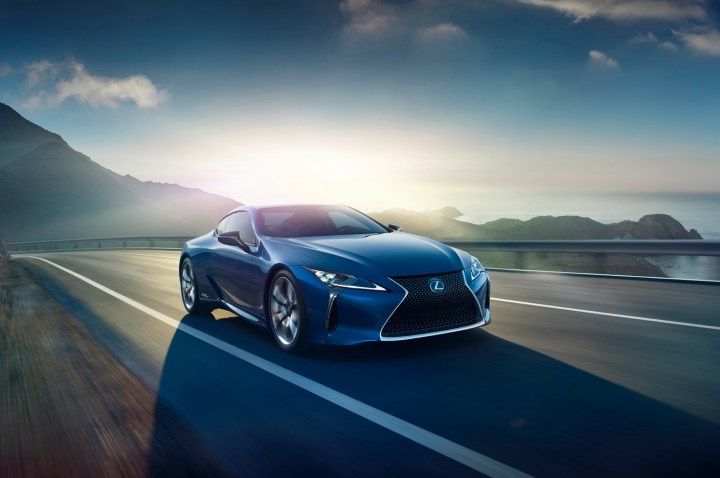
That powertrain, called the “Multi Stage Hybrid System,” is somewhat different from the hybrid systems offered in previous Lexus vehicles. Lexus says it’s designed specifically for performance vehicles, meaning engineers had to balance fuel efficiency with power.
Like all hybrid powertrains, the LC 500h setup is a jigsaw puzzle of different components. It includes a 3.5-liter V6, an electric motor with “hybrid transmission,” a lithium-ion battery pack, and a four-speed automatic. So this car essentially has two transmissions, and one is the kind you’d typically expect to find in a car built over a decade ago. The non-hybrid LC 500 uses a 10-speed automatic, remember.
The “hybrid transmission” is most likely a version of the “e-CVT” used in all previous Toyota and Lexus hybrids. It uses two electric motors; one sends power to the wheels, and the other recharges the battery pack. This is very efficient, but doesn’t produce the most engaging driving experience, which may be why Lexus added the four-speed geared transmission.
The automatic is placed behind the “hybrid transmission.” Lexus says adding physical gears into the mix helps more closely align the V6’s rpm with the driver’s inputs, making for a “more direct connection between the accelerator pedal and vehicle acceleration,” which is always a good thing. This also allowed engineers to add a manual shift mode, the first ever in a Lexus hybrid. “M Mode” lets drivers select their own gears, providing even more of a feeling of engagement.
For all of its cleverness, the LC 500h is still a bit down on power compared to the 5.0-liter V8 LC 500. Total system output is 354 horsepower, compared to the V8 car’s 467 hp. Lexus still claims a 0 to 60 mph time of under 5.0 seconds, though, and the hybrid will almost certainly get better fuel economy. And thanks to an all-new rear-wheel drive platform, the LC could very well be the sportiest Lexus ever, regardless of what is under the hood.


